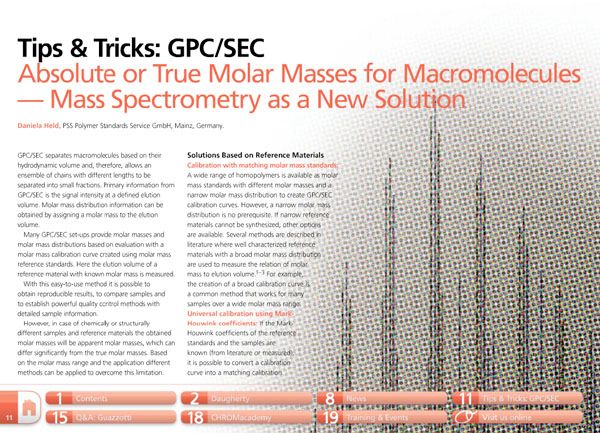Tips & Tricks: GPC/SEC: Absolute or True Molar Masses for Macromolecules - Mass Spectrometry as a New Solution
Many GPC/SEC set-ups provide molar masses and molar mass distributions based on evaluation with a molar mass calibration curve created using molar mass reference standards.
GPC/SEC separates macromolecules based on their hydrodynamic volume and, therefore, allows an ensemble of chains with different lengths to be separated into small fractions. Primary information from GPC/SEC is the signal intensity at a defined elution volume. Molar mass distribution information can be obtained by assigning a molar mass to the elution volume.
Many GPC/SEC set-ups provide molar masses and molar mass distributions based on evaluation with a molar mass calibration curve created using molar mass reference standards. Here the elution volume of a reference material with known molar mass is measured.
With this easy-to-use method it is possible to obtain reproducible results, to compare samples and to establish powerful quality control methods with detailed sample information.
However, in case of chemically or structurally different samples and reference materials the obtained molar masses will be apparent molar masses, which can differ significantly from the true molar masses. Based on the molar mass range and the application different methods can be applied to overcome this limitation.
New Method Explored for the Detection of CECs in Crops Irrigated with Contaminated Water
April 30th 2025This new study presents a validated QuEChERS–LC-MS/MS method for detecting eight persistent, mobile, and toxic substances in escarole, tomatoes, and tomato leaves irrigated with contaminated water.

.png&w=3840&q=75)

.png&w=3840&q=75)



.png&w=3840&q=75)



.png&w=3840&q=75)










